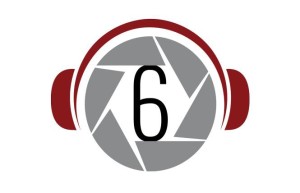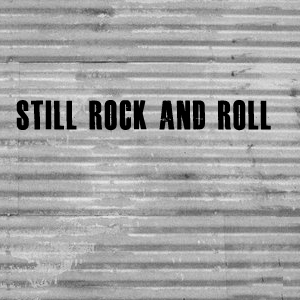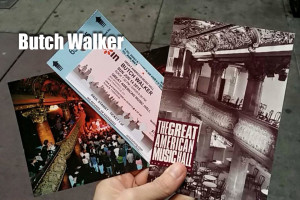Blame It On Corn (Why Our Food Is So Cheap)
9 min read We have all, at one time or another, ordered off of a fast food chain’s value menu. After all, what is not to like about a .99 cent cheeseburger? It’s cheap and it tastes good! However, many people do not stop to think about how a cheeseburger comes to cost 99 cents. Also, what is the difference between a .99 cent value menu cheeseburger and a 5 dollar cheeseburger ordered from a traditional “sit down” restaurant?
We have all, at one time or another, ordered off of a fast food chain’s value menu. After all, what is not to like about a .99 cent cheeseburger? It’s cheap and it tastes good! However, many people do not stop to think about how a cheeseburger comes to cost 99 cents. Also, what is the difference between a .99 cent value menu cheeseburger and a 5 dollar cheeseburger ordered from a traditional “sit down” restaurant?
To figure this out, one must learn about where our food actually comes from. So, with that, let us start at the farm from whence the cow came. The life of a cow begins at what is called a “cow-calf” operation, where, you guessed it, cows give birth to cows. This is what most people think of when they think of a farm; baby cows (calves) running around green pastures with their mothers. Their mothers eat grass and the baby suckles from the mothers until they are weaned. The male cattle will be neutered into steers (except for a lucky few to be used as breeding stock) and the females will generally be held for breeding. It is at this point that the life of cattle ventures from the commonly held idea of cows in green pastures.
After the cow is weaned, around 1 year old, it is generally loaded onto a truck or train and sent to a Confined Animal Feeding Operation (CAFO), or feedlot. These feedlots are extreme examples of modern efficiency. First, the purpose of the cattle being in the feedlot is to get fat and grow. American consumers like having high fat content in their beef, especially in the form of marbling. To do this, cattle are fed a very specialized diet, a diet which deserves our attention.
The next time you are driving through the country and you see some cattle in a field, look at what they are eating. They are eating grass. Cattle are perfectly suited to eat grass. Unlike humans, cattle stomachs (all 4 of them) are perfectly adapted to eating tough, incredibly fibrous grass that human stomachs simply cannot break down. (Don’t believe me? Try it sometime; it won’t hurt, I promise).
Corn, however, is very harmful to cattle in the long term, and cattle in feedlots do not eat grass; they eat corn. Why? Because corn has very high carbohydrate levels, and that leads to fat which, remember, is what consumers want. But wait, you ask, is it not cheaper to just feed cattle on grass, which is free, than to feed them corn, which is not free? And is it not cheaper to feed the cattle what they are meant to eat and to not have to pay to have veterinarians medicate them? Funny you ask that…
Corn is incredibly cheap. Like, pennies on the bushel cheap. How did it come to be? To learn that we must go back to the 1970s and the Nixon administration and his agriculture secretary, Earl Butz. In 1972, the United States had a bumper crop of grain, particularly corn. However, Russia was in the midst of a famine, still reeling from Soviet agriculture policies that had forced people that did not know how to farm to become farmers. So, Earl Butz decided to sell the Soviet Union our surplus, some 200-400 tons (an aside; what in the world Butz was thinking selling his Soviet enemies food, I will never know. I guess money really does talk).
What Butz did not foresee, however, was that in 1973 the United States faced its own grain shortage which was only made worse by the fact that Butz had sold all of our surplus to the Soviets. Butz actually liked the shortage because it drove grain prices up. High grain prices makes for happy grain farmers, which leads to farmer votes, which Butz liked (in the 70s there were more farmers than there are now; no one cares about the farmer vote anymore). However, the farm vote that Butz had won could not make up for the fact that EVERYONE ELSE was furious with the administration. Every other grain related food item, from bread to milk to meat, exploded in price. In 1973, the price of a bushel of corn cost more than a barrel of oil.
Butz now had quite a conundrum on his hand. How was he to maintain a high level of grain production, thus preventing any shortages, yet still have farmers gain a profit. His answer was the 1973 Farm Bill.[1] This bill did 2 very important things. The first thing it did was that it promised the farmers that the government would buy any excess crops. Farmers normally did not like excess crops because that was wasted money. If the government promised to buy whatever went unused by the market, the farmers would try to grow as much as possible, thus helping to guarantee a surplus and helping to avoid a shortage. The second thing the bill did was to allow the government to set prices on most grain crops, including corn. So, thanks to Earl Butz’s 1973 Farm Bill, the United States was guaranteed a surplus of corn.
So, back to 99 cent cheeseburgers and cows in feedlots. The corn that is fed to cattle in feedlots, a kind called #2 yellow dent, is INCREDIBLY CHEAP, about 3 dollars a bushel. That is why it is fed to cattle; that and the fact that the pens that cattle are held in in feedlots are not suitable for growing grass or any other plants. Another reason #2 yellow dent is fed to cattle is because it is incredibly starchy and high in carbohydrates. This causes cattle to reach market weight in no more than two years; cattle fed naturally on grass take 4-5 years to reach market weight, which is about 1500-2000 pounds.
The reason for .99 cent cheeseburgers is because raising cattle has become incredibly cheap. Cheap cattle equals cheep beef. The surplus of cheap corn is the determining factor that has led to cheap beef. Now, I am all for cheep, plentiful food! It is a good thing that America has not experienced anything close to a famine since the Dust Bowl. What poses the problems are the many unseen costs caused by this cheap beef. First off; the meat is not all that cheap. Even if you never bought beef, you are paying for it indirectly through taxes, as it is the tax subsidies (buying of surplus corn) that keep beef so cheap. Even pure vegans are paying for beef.
The second hidden cost is the environmental impact of feedlots (which is also paid for by taxes). Cattle in feedlots produce millions and millions of tons of waste every year. It would make sense to use this waste as fertilizer, but farmers do not want feedlot waste for fertilizer because the manure is far too acidic due to their all corn diet. To alleviate this waste, the manure is dumped in waste lagoons where water is used to keep the manure from drying up and blowing away. Also, bacteria in the water break down the manure. However, the incredible amount of waste is too much for bacteria to completely break down, and these lagoons are environmental disasters waiting to happen. First, water from the lagoon can seep into and contaminate groundwater sources, causing excess levels of nitrogen in the water which can lead to blue-baby syndrome (a condition where the infant has low oxygen levels in the blood). Also, many of these lagoons are held back by dams, and these dams occasionally burst, causing untold dollars worth of damage; damage that is usually cleaned up with taxpayer dollars.
Yet another untold cost is health, both to the cattle and to the human consumers. Cattle, unlike poultry and pigs, are not meant to eat corn. Before the advent of modern veterinary medicine cattle were only finished on corn for about 2 weeks before slaughter; now they are raised on it. Veterinary medicine is the only thing that allows cattle to survive on the corn diet. Diseases such as acidosis, bloat, bladder stones, and several vitamin deficiencies are all results of the corn based diet. Further, the environment in feedlots is harmful to cattle. Diseases such as bovine respiratory disease and foot rot are caused by the environment.
Yet another aspect of the feedlot diet that is harmful to cattle is the additives used in food, specifically the use of cattle and chicken meal. The use of cattle meal (ground up cattle bones and organs) in cattle feed is what led to the development of Mad Cow disease. Now, the FDA has banned the use of cattle meal in cattle feed, but cattle still get Mad Cow disease every so often. How? Well, cattle meal is fed to chickens (meal is often used as a binding agent in grain-based animal feed), and chicken meal is still used in cattle feed. Thereby, in a very roundabout way, the Mad Cow virus can still find its way into cattle.
The health impacts on humans are numerous. First, food poisoning. Humans never got E. Coli from beef until about 20 years ago (around the same time the corn surplus really started hitting the beef industry). E. Coli exists naturally in beef, and always has. However, whenever it reached our stomachs, the acids in our stomachs were usually acidic enough to kill the bacteria. With the introduction of corn into the diet of cattle, the acidity in cattle stomachs increased, which raised the acid tolerance in E. Coli, thus allowing E. Coli to survive in humans where it would have previously been killed. Yet another problem with corn fed beef is an incredibly unhealthy Omega 6-Omega 3 fatty acid ratio. Grass fed beef has a much healthier fatty acid ratio.
Despite all these hidden costs to health and environment, beef remains incredibly cheap. How is this so? The answers are time and government subsidies. The fact that cattle can be slaughtered within two years of birth is a boon to the cattle industry which allows incredibly quick turnaround on investment. If the government decided to take cheap corn subsidies away from the corn industry, they would have 2 riots on their hand. One would be the farmers that are used to always having their crops bought (even though they hardly make any money anymore). The other would be the consumers, who are used to having low quality but cheap, available meat.
The reason for cheap soda, and many other manufactured foods, is very similar. If one looks at the ingredients listed on the side of a can of soda, every ingredient but 2 comes from corn, and those are water and caffeine; everything else is a corn extract. Almost every candy on the aisles is made with corn. Most cereals have corn listed as a major ingredient. Almost all meat in America is fed on a corn based diet. The only foods that don’t have corn in them are other fruits and vegetables.
So, what is the problem with all this? After all, Americans have access to cheap, plentiful food. The problem is not with the quantity of the food, but the quality. Soda is SO cheap it is often the cheapest thing available. Why pay 80 cents for a bottle of water when you can pay 60 cents for a soda? $1.25 for a bottle of juice? Most people are going to go for the cheapest option, which will usually be soda. If soda were still sweetened with sugar, the price differences would be much smaller, and people might be more willing to buy the juice.
The same can be said for meat; a 99 cent fast food cheeseburger is much, much cheaper than grass fed ground beef, which usually goes for about $5 per pound as opposed to about $1.50 per pound for corn fed ground beef. Another problem is availability; grass fed beef is usually not an option in most grocery stores and is usually found only in specialty markets.
Is it a good thing to have all this cheap food? Yes and no. Yes because most Americans are not starving. No, because the food is rather unhealthy. Even if someone wanted to eat bacon and eggs for breakfast, a burger for lunch, and a steak for dinner, they would be far better off eating meat that did not come from feedlots and drinking soda sweetened with sugar instead of high fructose corn syrup.
Even though it would be incredibly unpopular, the best thing the government could do for the American food system would be to stop subsidies for corn (and every other cereal grain subsidized in the 1973 Farm Bill). Food prices would rise, but, theoretically, taxes would, or should, go down as tax dollars would no longer be needed to subsidize grain purchases. Hopefully, many of the environmental ills would go away, thus removing the need for expensive cleaning operations.
by Philip Hubbs
[1]Text of 1973 Farm Bill is found here: http://www.nationalaglawcenter.org/assets/farmbills/1973.pdf






Chef Hymie Grande (www.chefhymiegrande.com ) is the first and only bottled BBQ sauce to carry the seal of the American Diabetes Association on the label. It has no high fructose corn syrup, no processed sugar, it is all natural and vegan friendly. It is produced by Jamie Failtelson, a.k.a. Chef Hymie Grande of Carlstadt, NJ. 5% of proceeds go to the American Diabetes Association.
Excellent analysis of the beef industry. There is a movement afoot to produce more grass fed beef but as you stated, it would be through specialty markets. The cattle business, like everything else, is all about $$$. The margins are very small so it takes large numbers of animals, and quick turn-around, to make any real money.
Many good points, Mr. Hubbs. Our many government subsidies have had many more unintended consequences.